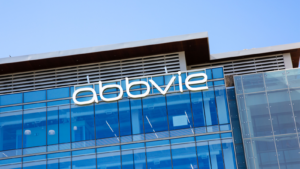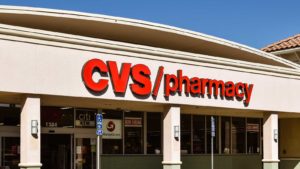What are cash cow stocks? If “Jeopardy!” ever broadcasted a category called “Market Downturn,” this may be your answer (in the form of question).
By definition, cash cows are ventures or operations that provide steady, reliable income or other benefits with minimal maintenance or oversight, according to U.S. News & World Report. Naturally, they’re best deployed during periods of market uncertainty. That said, the advantage is that cash cows are essentially permanently relevant.
No, they probably won’t get you rich overnight. We’re dealing with the full-sized SUVs of the equities space. They’re utilitarian and can ride over potholes like no one’s business. But winning the Indianapolis 500 isn’t on its list of stated objectives.
Instead, they offer much-needed confidence in a market environment that suffered a recent February chill. So, instill some confidence in your portfolio with these resilient cash-cow stocks.
AbbVie (ABBV)

As a healthcare giant – specifically in the pharmaceutical space – AbbVie (NYSE:ABBV) presents an intuitive case for cash-cow stocks. Fundamentally, I appreciate ABBV stock for the underlying company’s Allergan acquisition. With that move, AbbVie now controls Botox, the anti-wrinkle treatment. With today’s society so focused on aesthetics, Botox enjoys (arguably) a much bigger market than many analysts project.
Of course, that’s a much longer-term narrative. In the contemporary framework, ABBV stock offers value relative to its free cash flow (FCF). Currently, its enterprise-value-to-FCF ratio sits at 14.37X, favorably lower than the sector median 21.5X. Operationally, AbbVie prints three-year revenue growth of 13.4%, outpacing almost 73% of its rivals. Not surprisingly given its broad reach, the company enjoys robust margins and consistent annual profitability.
As for passive income, AbbVie sports a forward dividend yield of 3.36%. Even better, it features 52 years of consecutive payout increases thanks to the legacy of being a component of Abbott Laboratories (NYSE:ABT) prior to the 2012 spinoff. Thus, ABBV stands among the top cash-cow stocks to buy.
Qualcomm (QCOM)

No stranger to the wider technology umbrella, Qualcomm (NASDAQ:QCOM) bats clean up in terms of wireless solutions. Its connectivity-focused semiconductors and related services represent key components of the 5G rollout. If you’re talking on it – and it cost a lot of money – chances are, Qualcomm had a role in its development.
Reputationally speaking, the broader tech sphere tends to be characterized by high risk for the possibility of high reward. However, in Qualcomm’s case, we’re dealing with a market capitalization of $174 billion. The company is here for the long haul, which makes its forward earnings multiple of 16.37X quite compelling. As well, QCOM trades for only 17.5X FCF.
That’s no powder puff statistic either. Qualcomm enjoys consistently strong FCF, with the its fiscal year ended September coming in at $9.85 billion.
On the passive income side, the tech juggernaut offers a forward yield of just over 2%. While not the most generous print, the payout ratio sits at 29.36%, implying confidence in yield sustainability. Thus, it’s one of the cash-cow stocks to put on your radar.
CVS Health (CVS)

Another top-tier healthcare play, CVS Health (NYSE:CVS) encapsulates both high risk and high reward. Regarding the former category, stakeholders of CVS stock have been frustrated with the underperformance. For one thing, the equity is off to a rough start in the new year. Over the past 52 weeks, the company lost 13% of market value. Additionally, it faces competition in the retail pharmacy space.
The good news? That competition that has dogged CVS in recent years is finding out that pharmacy industry disruption is more difficult than it looks. Just consider the case of Amazon (NASDAQ:AMZN). A beacon of sheer convenience for consumers and a pain for rivals, the e-commerce giant recently stated that it will eliminate a “few hundred roles” across its One Medical and Amazon Pharmacy units.
Plus, with the fallout, CVS stock appears awfully enticing. For example, it only trades at 9.15X forward earnings. And the company is only priced at 0.56X FCF. Despite the not-so-favorable press that CVS occasionally receives, it consistently delivers strong cash flow, posting $10.4 billion FCF in 2023.
Finally, the company offers a forward yield of 3.47% and features a strong buy analyst consensus. For speculators, it’s one of the cash-cow stocks to buy.
On the date of publication, Josh Enomoto did not have (either directly or indirectly) any positions in the securities mentioned in this article. The opinions expressed in this article are those of the writer, subject to the InvestorPlace.com Publishing Guidelines.

